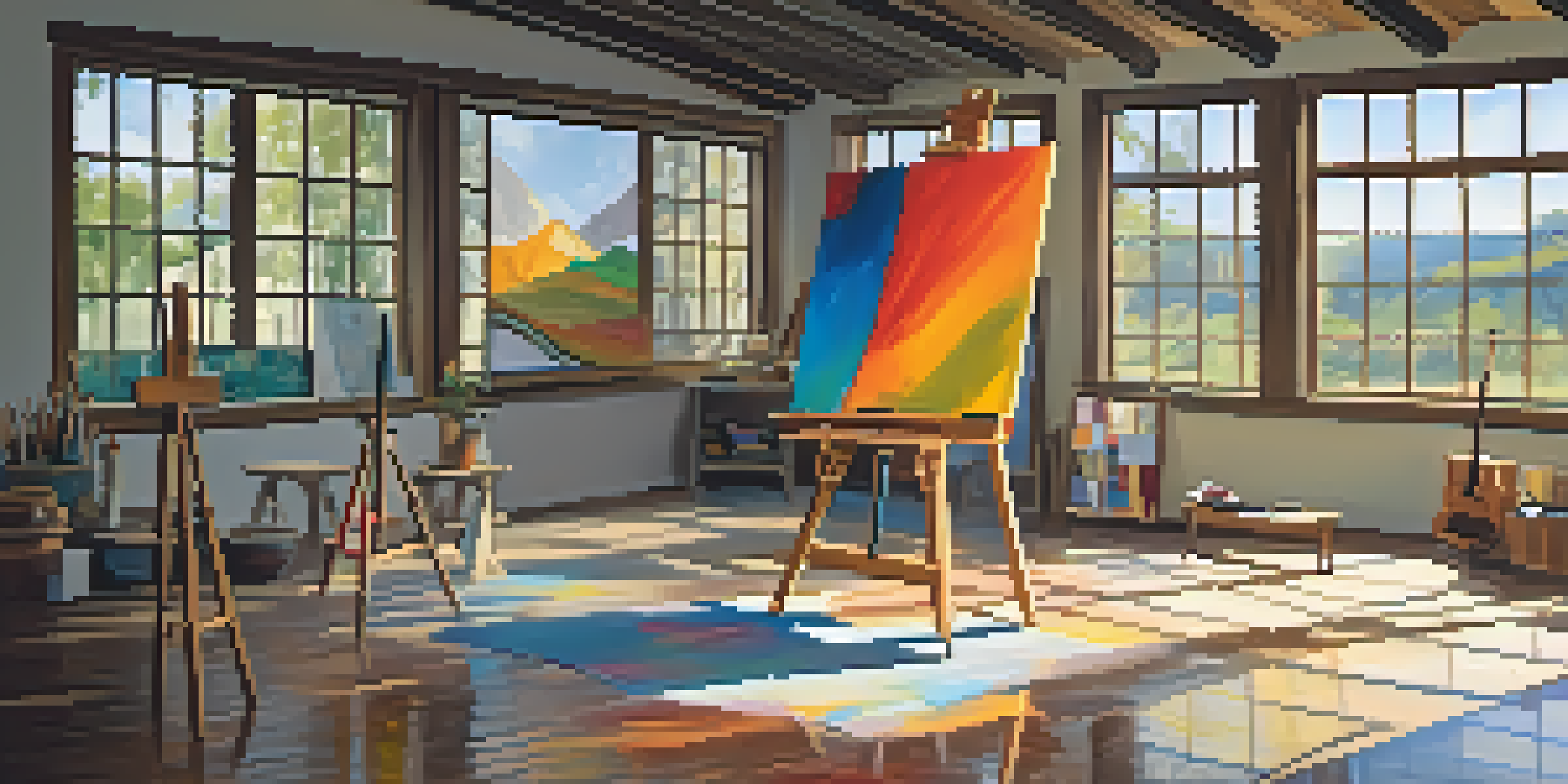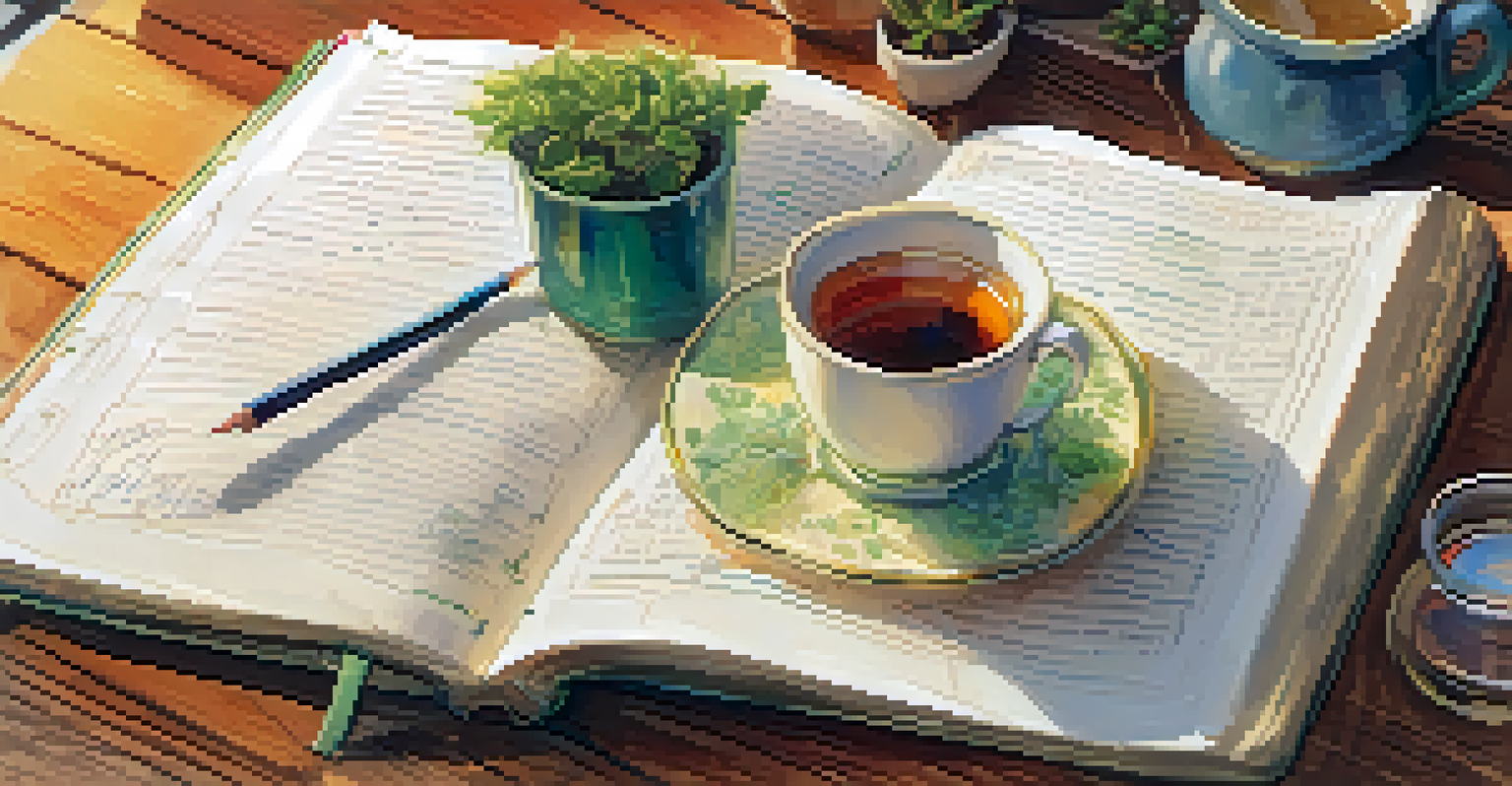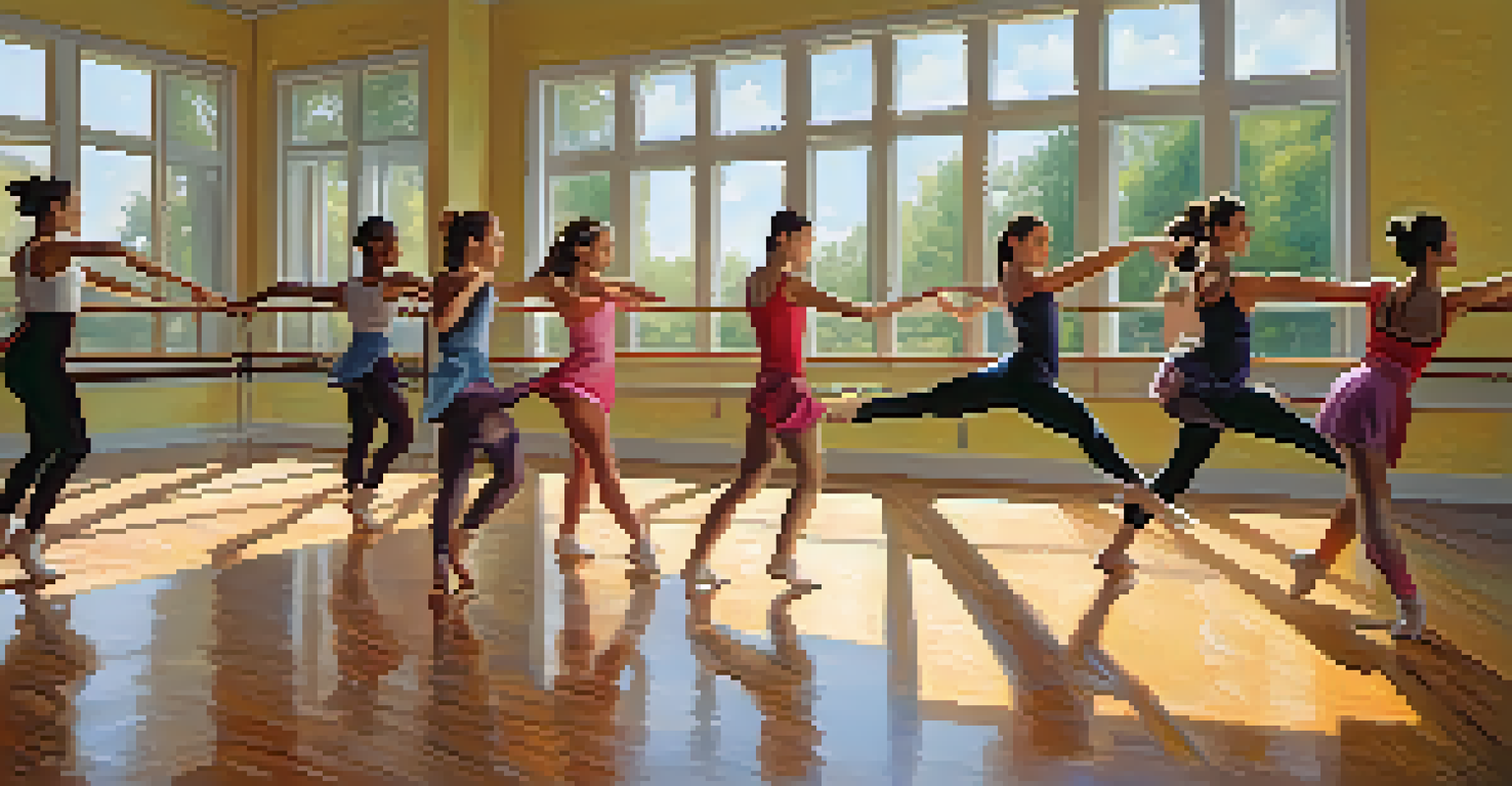Creative Expression: Using Art to Explore Your Inner World

Understanding Creative Expression and Its Importance
Creative expression is the process of using art to communicate feelings, thoughts, and experiences. It's a powerful tool that allows individuals to articulate emotions that might be difficult to express verbally. By engaging in creative activities like painting, drawing, or writing, you open up new avenues for self-discovery and understanding.
Every artist was first an amateur.
Art acts as a mirror, reflecting your inner world back to you. When you create, you're not just making something visually appealing; you're exploring your identity, beliefs, and experiences. This process can lead to profound insights about yourself, helping to foster personal growth and emotional healing.
Moreover, creative expression can serve as a therapeutic outlet. Many people find that when they immerse themselves in artistic activities, they can release pent-up emotions and stress. This practice not only promotes mental well-being but also encourages a deeper connection to your own thoughts and feelings.
Different Forms of Art for Self-Exploration
There are numerous forms of art that can be utilized for self-exploration, each offering unique benefits. Visual arts such as painting and sculpture allow for a hands-on approach, encouraging you to express your thoughts and feelings through colors and shapes. This tactile interaction can be incredibly liberating, allowing your emotions to flow freely onto the canvas.

Writing, whether through poetry, journaling, or storytelling, is another powerful medium for exploring your inner world. The act of putting pen to paper can help clarify your thoughts and feelings, making the abstract more concrete. As you write, you can unearth hidden emotions and reflect on your life's journey, creating a narrative that allows for deeper understanding.
Art as a Path to Self-Discovery
Engaging in creative expression allows individuals to explore their emotions and identity, leading to personal growth and insight.
Performative arts, like dance or theater, invite you to embody your emotions physically. Movement can be a profound way to express what words sometimes fail to capture. Engaging in these forms of art allows you to experience your emotions in a dynamic way, encouraging a holistic exploration of self.
The Role of Introspection in Creative Expression
Introspection is key in the process of creative expression. Taking time to reflect on your thoughts and feelings can significantly enhance your artistic endeavors. By understanding what you’re experiencing internally, you can channel those emotions into your art, making it a more authentic representation of your inner world.
Art enables us to find ourselves and lose ourselves at the same time.
During introspective moments, ask yourself questions like, 'What emotions am I feeling?' or 'What experiences are shaping my current mindset?' This self-inquiry can lead to deeper artistic insights and help you create works that resonate on a personal level. It transforms art from mere creation into a profound exploration of self.
Additionally, introspection fosters mindfulness, which can enhance your creative process. Being present in the moment allows you to fully engage with your art, whether you're mixing colors, crafting sentences, or expressing movement. This mindfulness can cultivate a richer connection to your emotions, making the artistic experience all the more rewarding.
Overcoming Creative Blocks and Fears
It's common to encounter creative blocks, which can be frustrating and disheartening. These blocks often stem from self-doubt or fear of judgment, making it difficult to express your true self through art. Acknowledging these feelings is the first step toward overcoming them; you're not alone in this struggle.
One effective method to combat creative blocks is to embrace imperfection. Remind yourself that art is a personal journey, not a competition. Allowing yourself to create without the pressure of perfection can free your imagination and encourage authentic expression. Sometimes, the most profound works come from moments of vulnerability and honesty.
Overcoming Creative Blocks
Embracing imperfection and experimenting with different artistic mediums can help individuals overcome self-doubt and reignite their creativity.
Additionally, experimenting with different artistic mediums can help shake off those creative cobwebs. If you typically paint, try writing or dancing instead. This variety can reignite your passion for creativity and provide new perspectives on your inner world, ultimately leading to richer self-expression.
Connecting with Others Through Art
Art has the unique ability to foster connections between individuals. Sharing your creative work can lead to meaningful conversations, allowing others to see glimpses of your inner world. This exchange not only builds community but also creates a sense of belonging and understanding.
Participating in art classes or workshops can be a great way to meet like-minded individuals. These environments encourage collaboration and support, enabling you to share your experiences and learn from others. The connections forged in these settings can lead to lasting friendships and a deeper appreciation for the healing power of art.
Furthermore, engaging with others' artistic expressions can provide new insights into your own journey. Viewing someone else's work might resonate with your experiences, sparking reflection and dialogue. This shared experience can be incredibly enriching, reminding us that while our inner worlds may feel solitary, we are all part of a larger human narrative.
The Healing Power of Art Therapy
Art therapy is a structured therapeutic approach that incorporates creative expression as a means of healing. It provides a safe space for individuals to explore their emotions and experiences through art, guided by a trained professional. This can be particularly beneficial for those who find it challenging to articulate their feelings verbally.
Through art therapy, individuals can confront past traumas, process grief, or manage anxiety in a supportive environment. The act of creating becomes a powerful tool for emotional release and self-discovery. Many find that art therapy not only helps them cope with difficult emotions but also fosters resilience and personal growth.
The Community of Creative Sharing
Sharing art fosters connections and understanding among individuals, building a sense of community and enriching the creative experience.
Moreover, art therapy is accessible to everyone, regardless of artistic skill level. You don’t need to be a professional artist to benefit from this form of therapy; it's about the process, not the product. Engaging in art therapy can lead to profound insights and healing, making it an invaluable resource for exploring your inner world.
Embracing the Journey of Creative Expression
The journey of creative expression is ongoing and ever-evolving. Embracing this journey means accepting that your artistic practice will change over time as you grow and learn more about yourself. Each piece of art you create is a snapshot of your feelings and experiences at that moment, adding depth to your personal narrative.
Celebrate your artistic milestones, no matter how small. Whether you finish a painting or write a single poem, each achievement is a step forward in your self-exploration. This celebration not only reinforces your commitment to the process but also encourages a positive relationship with your creativity.

Finally, remember that there is no right or wrong way to express yourself. Allow your creativity to flow freely, and don't be afraid to experiment. This openness will lead you to unexpected discoveries about your inner world, making the journey of creative expression all the more rewarding.